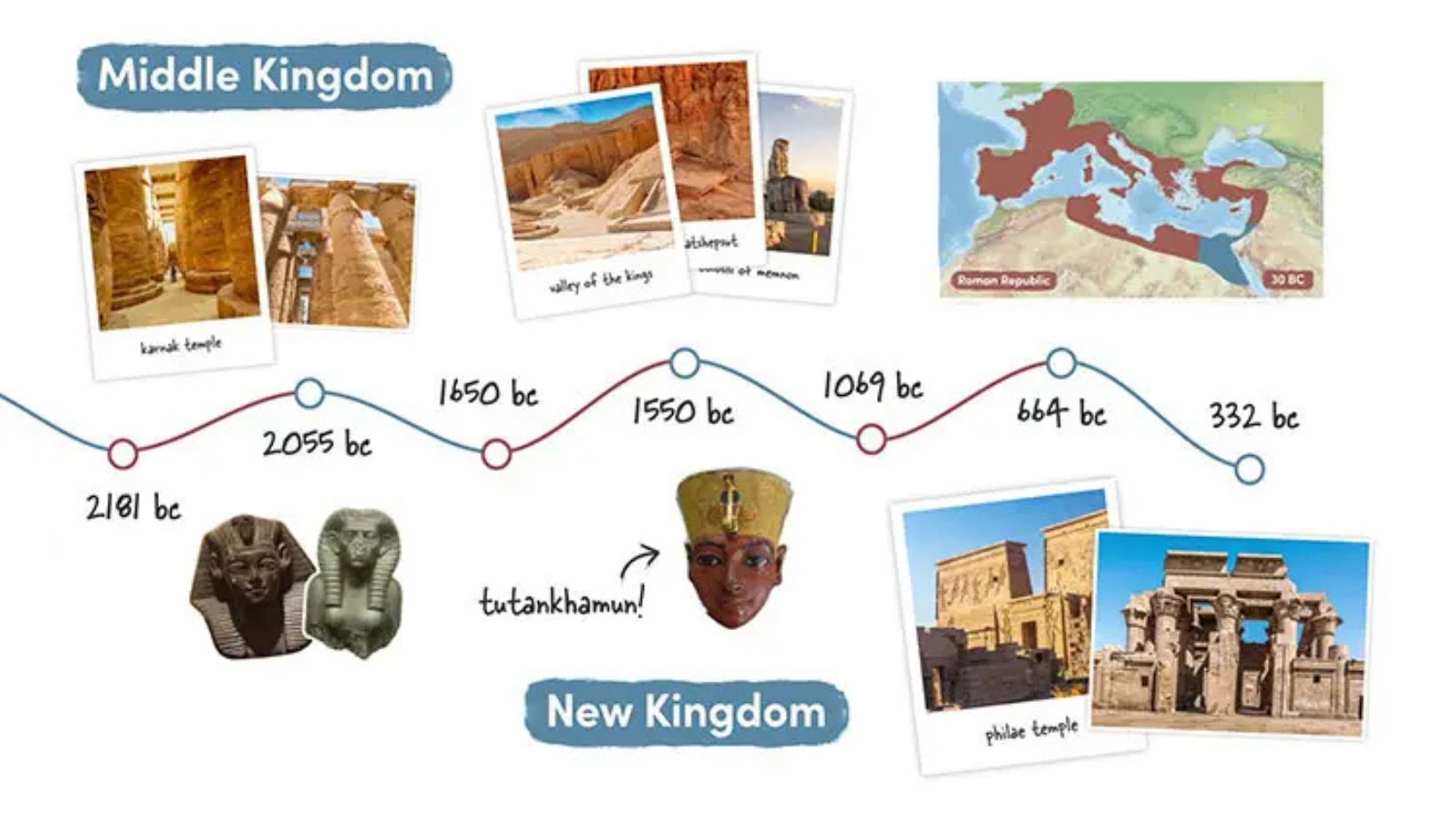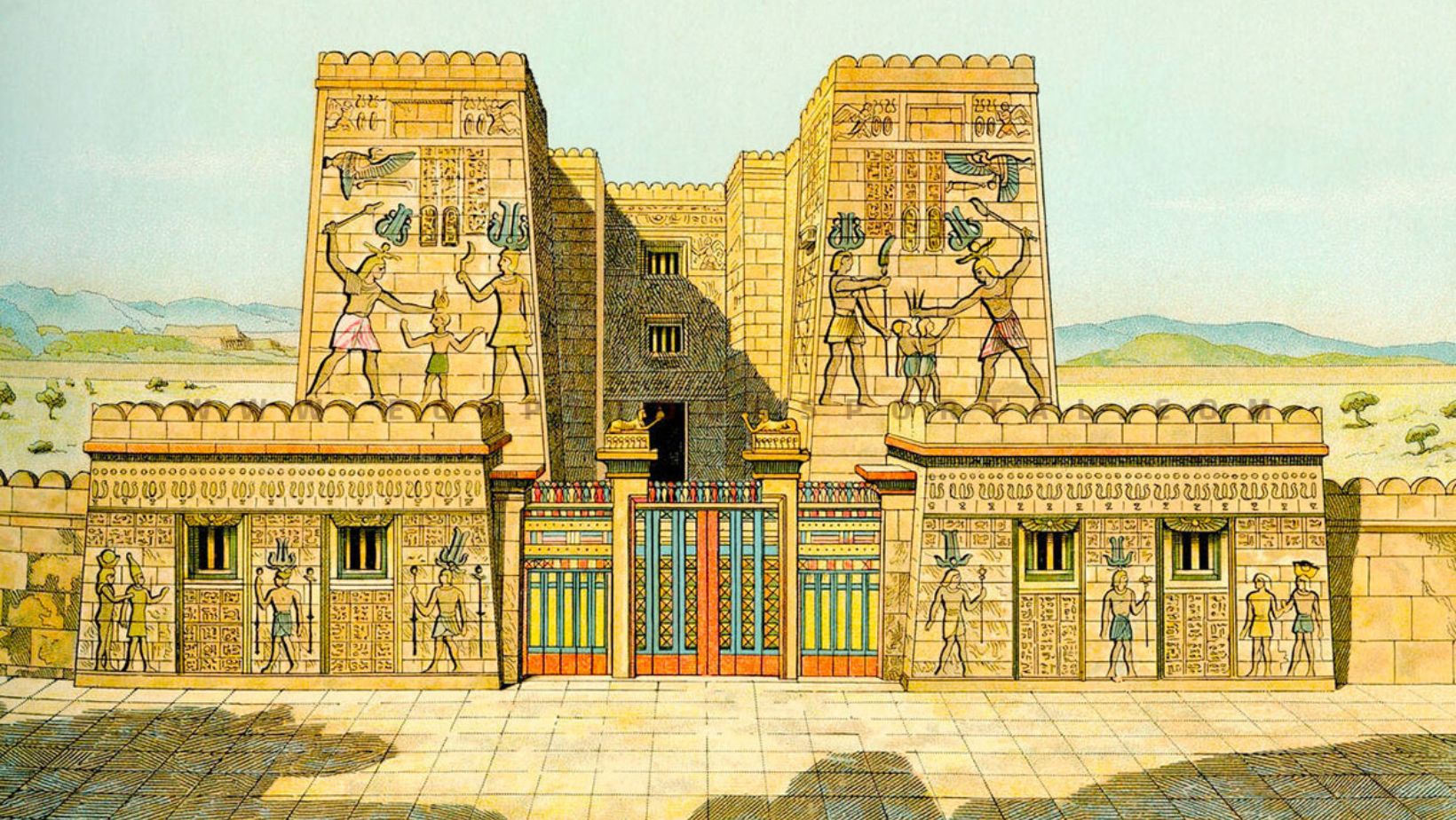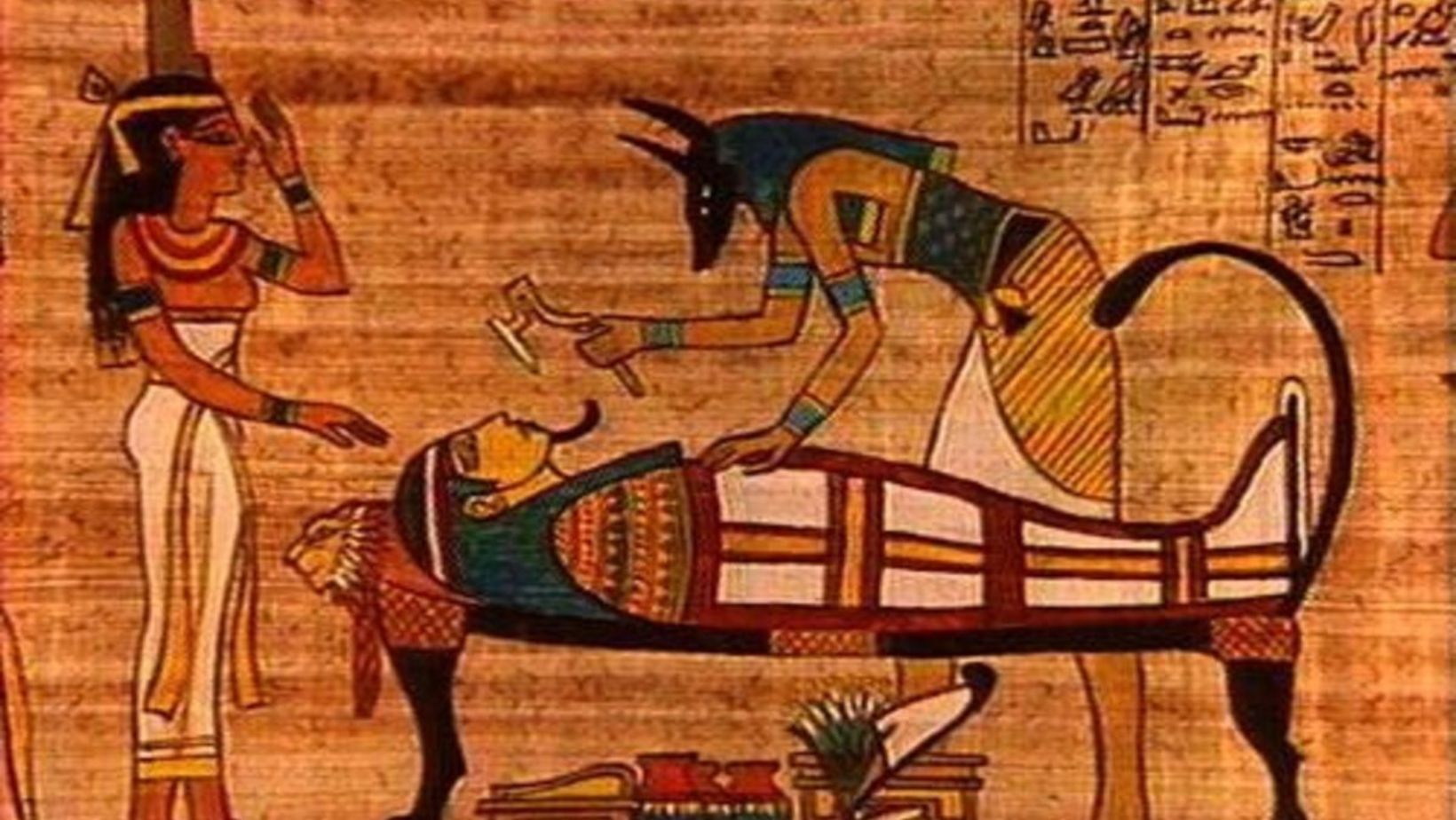Ancient Egyptian Civilization has fascinated people for centuries. Its rich history, stunning architecture, and intriguing mythology draw historians and the public alike. From the majestic pyramids that touch the sky to the intricate hieroglyphics that tell stories of the past, there’s so much to explore. The mysterious rituals and powerful deities add to the allure, making it a unique civilization that still captivates our imagination. Join us as we unveil the mysteries of Ancient Egypt and discover what makes this ancient culture so enduring and intriguing. Prepare for a journey through time!
The Historical Timeline of Ancient Egyptian Civilization

Ancient Egyptian civilization can be divided into several major periods, each marked by significant developments. The Predynastic Period (c. 5000–3100 BCE) saw the formation of early settlements along the Nile. During this time, agriculture and trade began to flourish, setting the stage for a unified Egypt.
The Old Kingdom (c. 2686–2181 BCE) is famous for its monumental architecture, including the Great Pyramids of Giza. This era was characterized by a strong centralized government and a focus on tomb construction for pharaohs.
Next came the Middle Kingdom (c. 2055–1650 BCE), a time of cultural renaissance and military expansion. The arts and literature thrived, and significant irrigation projects improved agriculture.
The New Kingdom (c. 1550–1070 BCE) marked the height of Egypt’s power. Pharaohs like Hatshepsut and Ramses II expanded the empire and built grand temples. Finally, the Late Period (c. 664–332 BCE) saw a decline in power and increasing foreign invasions, leading to Egypt’s eventual conquest by Alexander the Great in 332 BCE. Each period contributed to the rich tapestry of Ancient Egyptian history.
Society and Social Structure of Egyptian Civilization
Ancient Egyptian society was structured as a strict hierarchy. At the top was the pharaoh, considered a god on earth. The pharaoh held absolute power, making decisions about laws, religion, and military actions. Beneath the pharaoh were the nobles, who served as advisors and managed lands. They played key roles in governance and often owned large estates. Egyptian Civilization
Next in the hierarchy were the priests, responsible for religious ceremonies and temple maintenance. They held significant power, as they connected the people with the gods. Following the priests were the artisans and craftsmen, skilled workers who created jewelry, pottery, and artwork. Their contributions were vital for both daily life and religious practices.
The largest class comprised farmers, who provided food for society. They worked the land and paid taxes to the pharaoh in the form of crops. Despite their essential role, farmers had limited social mobility. Overall, this structured society ensured stability and order, allowing Ancient Egypt to thrive for centuries.
Religion and Mythology
Ancient Egypt had a rich pantheon of gods and goddesses, each with unique roles and attributes. Prominent deities included Ra, the sun god; Osiris, the god of the afterlife; and Isis, the goddess of magic and motherhood. These gods were believed to influence every aspect of life, from agriculture to governance. Temples dedicated to these deities served as centers of worship and community gatherings.
Religion was deeply woven into daily life in Ancient Egypt. Rituals and offerings were common, as people sought favor from the gods. The pharaoh, considered a divine ruler, acted as an intermediary between the gods and the people. This belief solidified his authority and reinforced the social hierarchy.
Moreover, religion governed the moral and ethical standards of society. The Egyptians believed in concepts like ma’at, representing truth, balance, and order. This influenced laws and social norms. The afterlife was also a significant aspect of their beliefs, as many sought to secure a favorable judgment for eternal life. Overall, religion and mythology shaped the cultural identity of Ancient Egypt, impacting both personal lives and the broader political landscape.
Art and Architecture: A Lasting Legacy of Egyptian Civilization

Ancient Egyptian architecture is renowned for its monumental structures, including the iconic pyramids and grand temples. The Pyramids of Giza, built as tombs for pharaohs, showcase advanced engineering and mathematics. These structures not only served as burial sites but also as a testament to the pharaohs’ power and divine status. The Great Pyramid of Khufu remains one of the Seven Wonders of the Ancient World.
Temples, such as the Temple of Karnak and the Temple of Luxor, were central to religious life. They were designed to honor the gods and host rituals, including offerings and festivals. These architectural feats featured towering columns, intricate carvings, and vast courtyards, symbolizing the connection between the divine and the earthly realm.
Art in Ancient Egypt played a crucial role in religious and funerary practices. Hieroglyphics adorned walls, telling stories of gods, pharaohs, and the afterlife. Paintings and sculptures were created to accompany the dead in their journey to the afterlife, ensuring they received protection and sustenance. Overall, the art and architecture of Ancient Egypt reflect their beliefs, values, and enduring legacy in history.
Writing Systems: Hieroglyphics and Beyond
Hieroglyphics are one of the most famous writing systems of Ancient Egypt. This complex script combines logographic and alphabetic elements, using symbols to represent sounds, words, and concepts. Hieroglyphics were primarily used for religious texts, monumental inscriptions, and important official documents. They held significant cultural value, serving as a means to communicate with the gods and preserve history.
In addition to hieroglyphics, the Egyptians developed other writing systems for different purposes. Hieratic was a simplified form of hieroglyphics used mainly by priests for religious texts and administrative documents. This cursive writing was faster to write, making it practical for daily use. Egyptian Civilization
Another writing system, demotic, emerged later around the 7th century BCE. It was even more simplified and commonly used in legal and commercial contexts. Demotic allowed for greater literacy among the general population, reflecting the evolving needs of Egyptian society. Together, these writing systems illustrate the richness of Egyptian culture and their emphasis on communication, record-keeping, and religious expression.
Advancements in Science and Technology
Ancient Egyptians made significant contributions to mathematics, medicine, and engineering. They developed a decimal system based on the number ten, which enabled them to perform complex calculations for trade, taxation, and construction. Their understanding of geometry helped in the precise design and construction of the pyramids and temples.
In medicine, ancient Egyptians practiced advanced surgical techniques and had a vast knowledge of herbal remedies. Medical texts like the Ebers Papyrus illustrate their understanding of anatomy and disease treatment.
Additionally, the Egyptians were pioneers in agriculture and irrigation techniques. They utilized the annual flooding of the Nile River to enrich the soil, enabling them to grow surplus crops. They constructed an extensive system of canals and basins to manage water efficiently, ensuring consistent agricultural production.
These advancements laid the foundation for future developments in science and technology, showcasing the ingenuity of Ancient Egyptian civilization. Their contributions remain influential, reflecting their deep understanding of the natural world and their innovative spirit.
Daily Life in Ancient Egyptian Civilization
Daily life in Ancient Egypt revolved around the Nile River, which was vital for agriculture and trade. Most Egyptians began their day at sunrise, working in fields or crafts. Farmers tended to crops like wheat and barley, while artisans created pottery and jewelry. Meals were simple, consisting of bread, vegetables, fish, and beer, which was a staple drink.
Clothing was practical and made from linen, which was suitable for the hot climate. Men typically wore kilts, while women donned long dresses. Both genders accessorized with jewelry made from gold and semi-precious stones. Housing varied by social class, with the wealthy living in larger, more elaborate homes made of mud bricks, while the poor had simpler structures.
Women in Ancient Egypt held a respected position in society. They could own property, manage businesses, and inherit wealth. Family life was central, with marriages often arranged for social or economic reasons. Children were highly valued, and education was encouraged, especially for boys, but girls could also learn essential skills. Overall, daily life in Ancient Egypt was a blend of labor, family, and social structure.
Trade and Economy
Trade and economy were essential to Ancient Egypt’s prosperity. The Nile River served as a major trade route, connecting various regions and facilitating the movement of goods. Egyptians traded surplus agricultural products, such as grain and linen, for resources they lacked, like timber, incense, and precious metals. This exchange allowed them to acquire materials from distant lands.
The Nile’s annual flooding deposited nutrient-rich silt, making the land fertile and boosting agricultural production. This abundance supported not only local consumption but also export to neighboring regions. Key trade routes extended to places like Nubia, the Levant, and the Mediterranean, where Egyptian merchants exchanged goods with other cultures.
Moreover, the centralized government regulated trade, imposing taxes and overseeing transactions. Pharaohs controlled large-scale projects that improved infrastructure, such as canals and roads, further enhancing trade efficiency. Thus, the combination of the Nile’s fertility and a robust trade network laid the foundation for a thriving economy in Ancient Egypt. The interdependence of agriculture and trade played a vital role in sustaining their civilization and expanding its influence.
Death and the Afterlife: Mummification and Burial Practices

Ancient Egyptians held deep beliefs about the afterlife, viewing it as a continuation of life on Earth. They believed that preserving the body was crucial for the soul’s journey, leading to the practice of mummification. This complex process involved removing internal organs, drying the body with natron, and wrapping it in linen. The preservation allowed the deceased to be recognized in the afterlife, ensuring their immortality.
Burial practices were equally significant. Tombs were constructed to house the dead, often filled with items the deceased might need in the afterlife. Among the most famous discoveries is King Tutankhamun’s tomb, unearthed in 1922 by Howard Carter. The tomb contained a wealth of treasures, including gold artifacts, furniture, and the iconic golden mask, showcasing the artistry and beliefs of the time.
Other notable tombs include those in the Valley of the Kings, where pharaohs and nobles were laid to rest. These elaborate burial sites reflected their status and ensured a comfortable afterlife. The careful attention to mummification and burial practices illustrates the importance of the afterlife in Ancient Egyptian culture.
Challenges and Decline of Ancient Egypt
The decline of Ancient Egypt was influenced by several key factors. One significant challenge was external invasions. The Assyrians, Persians, and eventually the Greeks and Romans all conquered parts of Egypt, weakening its power and influence. Each invasion brought about changes in governance and culture, disrupting the established way of life.
Internal strife also played a crucial role. Political instability, including power struggles among the pharaohs and nobility, weakened the central authority. Civil wars and factional conflicts drained resources and diverted attention from external threats. These struggles led to a lack of unity, making it easier for foreign powers to assert control.
Additionally, the rise of neighboring civilizations contributed to Egypt’s decline. The Nubians and later the Axumites became significant regional powers. They challenged Egyptian dominance in trade and territory, further undermining its economic stability.
As these factors combined, they gradually eroded the once-great civilization, leading to the eventual fall of Ancient Egypt. Its legacy, however, continues to influence cultures and societies worldwide. Egyptian Civilization
Conclusion: Egyptian Civilization
Ancient Egypt’s legacy remains strong in modern culture. Its art, architecture, and mythology continue to inspire literature, films, and fashion today. Iconic symbols, such as the ankh and pyramids, are recognized worldwide, reflecting the civilization’s impact on global history. Ongoing research and discoveries keep the intrigue alive, shedding light on the daily lives, beliefs, and innovations of this remarkable society. As archaeologists uncover new artifacts, our understanding of Ancient Egypt deepens, reminding us of its profound influence on civilization. This fascination ensures that the stories and achievements of Ancient Egypt will endure for generations to come.
FAQs
What are the primary sources of information about Ancient Egypt?
Key sources include hieroglyphics, archaeological artifacts, and historical texts from ancient historians like Herodotus. Excavations of tombs, temples, and monuments provide insights into daily life, religion, and governance. Museums also house many significant artifacts that help reconstruct this ancient civilization.
How did Ancient Egyptians preserve their knowledge and history?
The Egyptians used hieroglyphics to document religious texts, historical events, and administrative records. Scribes played a vital role in this process, ensuring that knowledge was recorded on papyrus scrolls and inscribed on temple walls. This meticulous documentation allowed future generations to learn from their predecessors.
What were the major achievements of Ancient Egyptian architecture?
Ancient Egyptians are renowned for their monumental structures, including the Pyramids of Giza and the temples at Karnak and Luxor. They developed advanced techniques for construction and design, utilizing precise measurements and alignment with astronomical events. Their architectural legacy continues to influence modern design.
How did Ancient Egyptian civilization interact with neighboring cultures?
Ancient Egyptians engaged in trade, warfare, and diplomacy with neighboring civilizations, including Nubia, Mesopotamia, and the Hittites. These interactions influenced art, culture, and technology, leading to the exchange of goods and ideas that enriched Egyptian society.
What role did the Nile River play in the development of Ancient Egypt?
The Nile River was the lifeblood of Ancient Egypt, providing water for irrigation and supporting agriculture. Its annual floods deposited nutrient-rich silt, enhancing crop yields. The river also served as a vital transportation route, facilitating trade and communication throughout the civilization.

